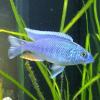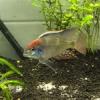The Chlorine levels in water straight out of the tap, generally found at a level of 4 ppm will damage filter bacteria (Nitrobacter & Nitrosomonas) and have a detrimental impact on fish.
Adding some water conditioner (Active ingredient: Sodium thiosulphate) will 'neutralize' the chlorine within minutes. Just add some before you fill the tank then wait 20 mins before you put your filter back on.
API tap water condition is the best value product for conditioning large volumes of water and the one I use. A water conditioner in some shape or form should always be used when adding water from the tap into the aquarium.
You will generally suffer unavoidable damage to your filter bacteria when you turn your filters off for more than a couple of hours (Particularly in canisters as they are a sealed vessel). This is due to lack of freshwater, nutrients and oxygen in the canister as fresh water is not flowing through it, Just try and minimize the time your filter are not running.
Otherwise if you need a day or 2 to swap things over just open the lids of the canisters and drop an air-stone in.














